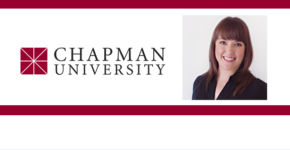 We might not be as prepared for a natural disaster as we think.
We might not be as prepared for a natural disaster as we think.
Ann Gordon, associate professor of political science at Chapman University, examines if our preparedness could use a tune-up.
Dr. Ann Gordon is associate dean of Wilkinson College of Arts, Humanities and Social Sciences, and an associate professor of political science. She is the director of the Ludie and David C. Henley Social Sciences Research Laboratory. Dr. Gordon has published three books and numerous articles. She is Co-PI of the ongoing Chapman Survey of American Fears (CSAF), leading the team studying disasters and preparedness. The CSAF has been featured in over 800 print and broadcast media including the New York Times, The Huffington Post, CBS This Morning, Yahoo News, Good Housekeeping, the Washington Post, USA Today, and TIME. Dr. Gordon works with emergency managers in Southern California on communicating preparedness to the public.
Natural Disaster Preparedness
In our national survey we found more than half of all Americans (63%) believe that “Natural disasters in my area are capable of doing serious harm to me or my property.”
The vast majority (78%) believes an emergency supply kit, such as a 72 hour kit recommended by FEMA or the Red Cross would improve their chances of surviving a disaster. Nevertheless, 74% have made no effort to put together such a kit. Why?
The number one excuse given by Americans is that they expect first responders to come to their aid. This is an unrealistic belief in the wake of a major disaster. Local officials cannot reach everyone immediately and it could be hours or even days. This means having your own food, water and other supplies , such as prescription medication in sufficient quantity to last for at least 72 hours.
Additionally, basic services such as electricity, gas, water, sewage treatment and telephones may be cut off for days, a week, or even longer.
Telling the public to prepare for disaster is an inherently scary message. When confronted with such information, members of the public can respond by trying to control the feeling of fear. There are four factors that are essential for motivating preparedness.
- Perceived Susceptibility – this can happen to me
- Perceived Severity- this is serious
- Self-efficacy- I can actually do something to help myself
- Response efficacy- the recommended action would make a difference
We found that each of these factors contributed significantly to the likelihood of preparing for disaster. When communicating with the public about the importance of disaster preparedness, it is vital that the message emphasize susceptibility, severity and most importantly self-efficacy and response efficacy. Without these components, the message is likely to cause fear without action.
